

Matt Robinson
2026 Skoda Fabia 130 review: Quick drive
15 Hours Ago
In the world of small city hatchbacks, Hyundai's i30 has always been a popular choice. How does the 2020 Premium uphold this reputation?
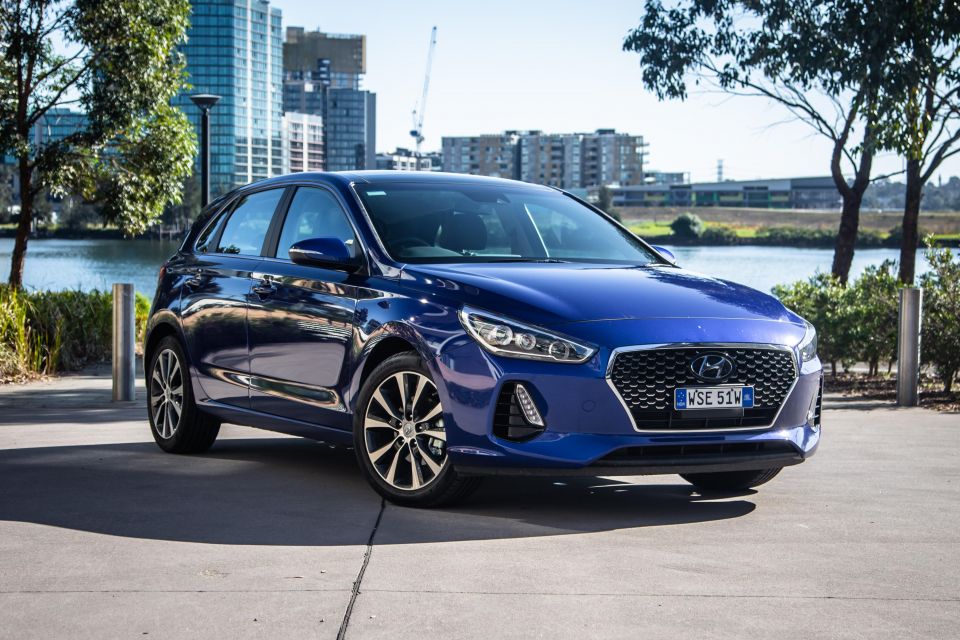
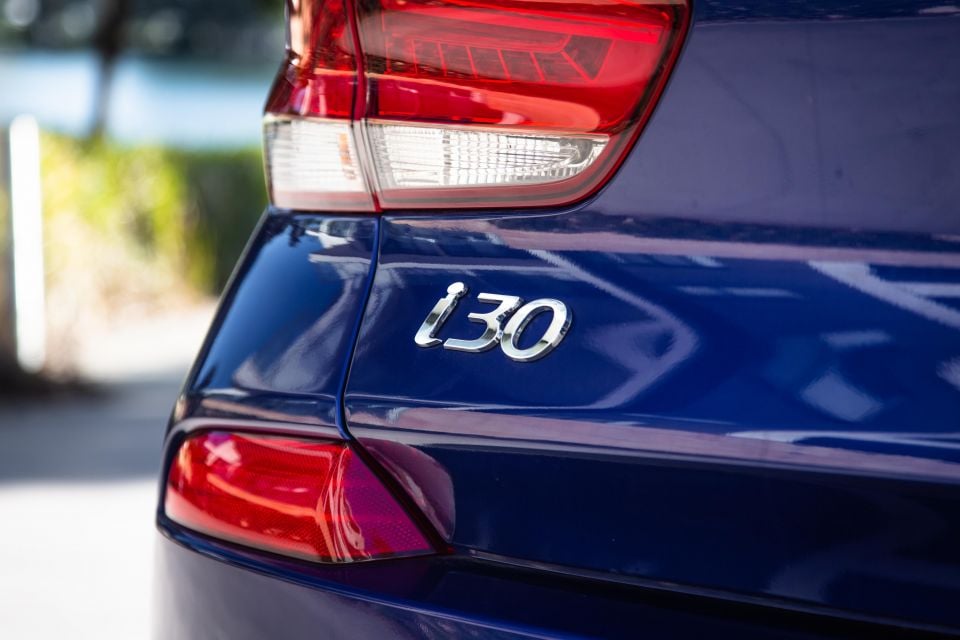

Contributor
New from
$33,040
excl. on-roads

Contributor
New from
$33,040
excl. on-roads


Contributor
New from
$33,040
excl. on-roads

Contributor
New from
$33,040
excl. on-roads
Quickly see how this car stacks up against its competition. Select any benchmark to see more details.
Where expert car reviews meet expert car buying – CarExpert gives you trusted advice, personalised service and real savings on your next new car.
To me, a winning vehicle appears sporty on the outside, but refined on the inside. Aesthetics and comfort tend to be at the top of the list.
For this reason, Hyundai’s latest i30 Premium ticked a lot of boxes (despite being due for an update very soon). Of course, there’s more to a car than a nice design and a convenient place to put your coffee.

As the little brother of the i30 N Line Premium, it still includes a lot of the same features, just minus the sportier details and punchy turbocharged petrol engine with DCT.
With sporty wheels, a large grille, and a lovely deep blue paint job (Intense Blue, to be precise), it’s clear Hyundai has gone for a slightly more subdued take on the warmed-up design doing service on the i30 N Line Premium.
It’s well-specified, too. Competing in the hatchback market has become increasingly harder as the expectations of consumers have risen.

The Hyundai i30 Premium starts at $33,370 before on-road costs. If a rare-for-the-class diesel engine is more your thing, that retails for $36,100 before on-roads.
If you want to tweak the look, there’s a choice between four Sports Styling Packs, priced at $1980 or $2325. These packs pimp out the Premium by adding features such as a body kit, 15mm lower ride height, and different alloy wheels. There is also a Chrome pack for $642.
The i30 Premium sits between the faster but less well-equipped N Line ($30,040 for the dual-clutch), and the similarly-specified i30 N Line Premium ($35,590 before on-roads). In other words, it’s designed to deliver luxury at a slightly more sedate pace.
Polar white is the i30’s stock colour with a charge of $495 for any other colours (this applies to all models). These include Amazon Grey, Phantom Black, Typhoon Silver, and Fiery Red. All models come with black leather trim for the interior, with beige a no-cost option for the Premium.
Buy your new car without the stress. It's fast, simple and completely free.

Great service from Travis and team, second time I have used this business would not hesitate to recommend them to anyone
Craig C.
Purchased a Ford Ranger in Sunshine Coast, QLD
CarExpert helped Craig save thousands on his Ford Ranger, now let us save you on your next new car.
Find a dealAt the end of the day, the price you pay at the dealership will be dependent on a number of factors such as when you want to buy (is the dealership chasing sales?), the age of the model you’re purchasing (is a new generation model being launched soon) and of course your strength as a negotiator.
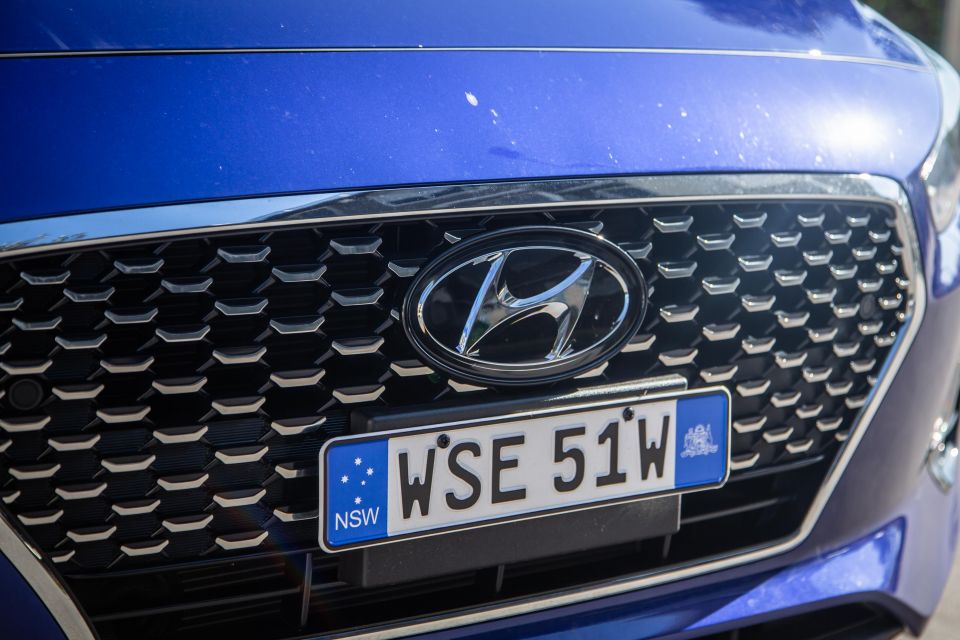
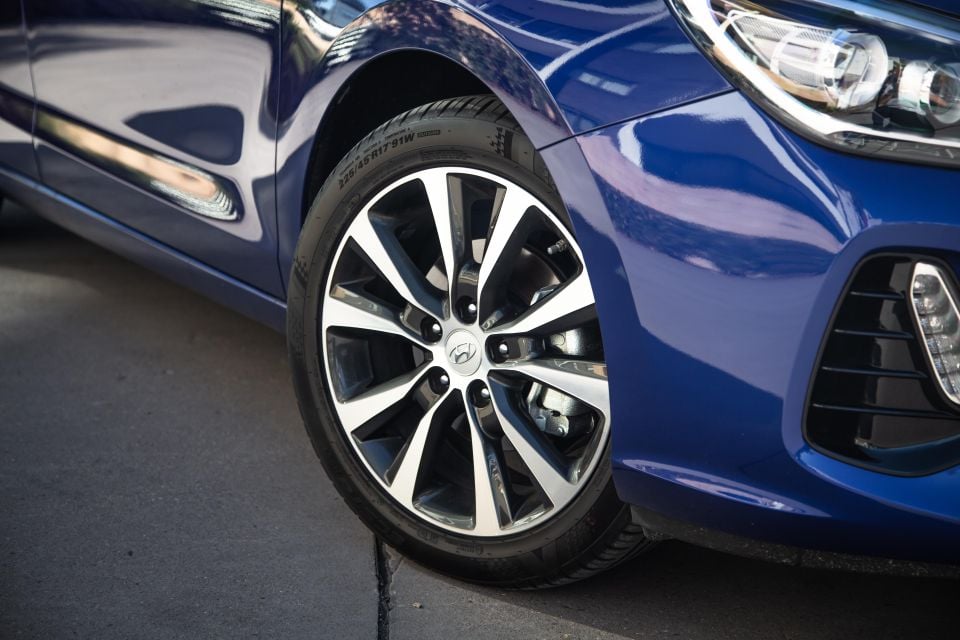
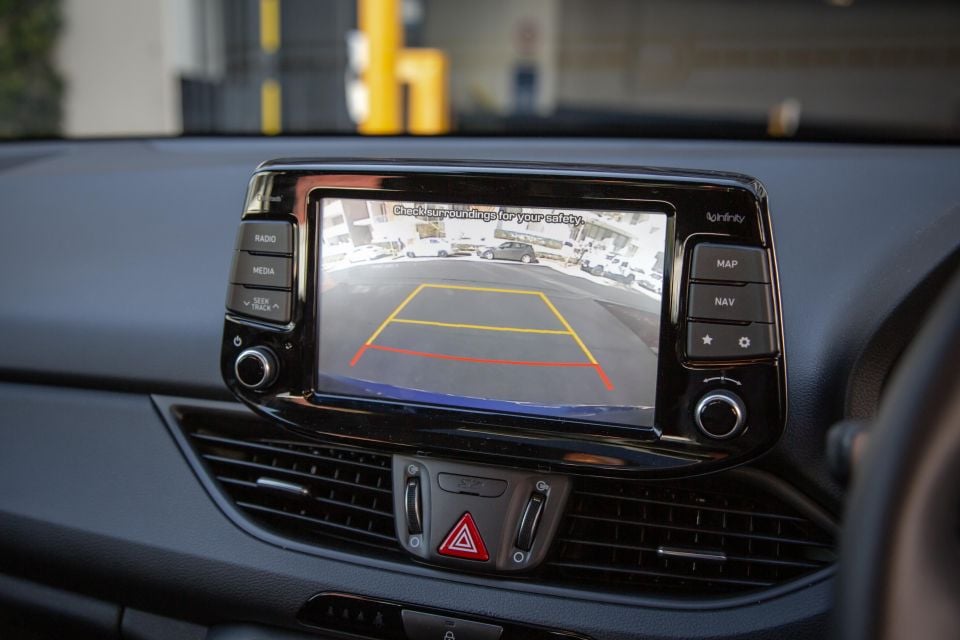
You may be wondering whether the i30 is worth the price tag, as it does sway towards the higher end compared to its competition.
Standout features include 17-inch alloy wheels, a proximity key, auto hold, and a panoramic sunroof, along with LED headlights and tail lights. There’s also heated and ventilated front seats with power adjustment for the driver, leather-appointed upholstery, an auto-dimming interior mirror, dual-zone climate control, and rain-sensing wipers.
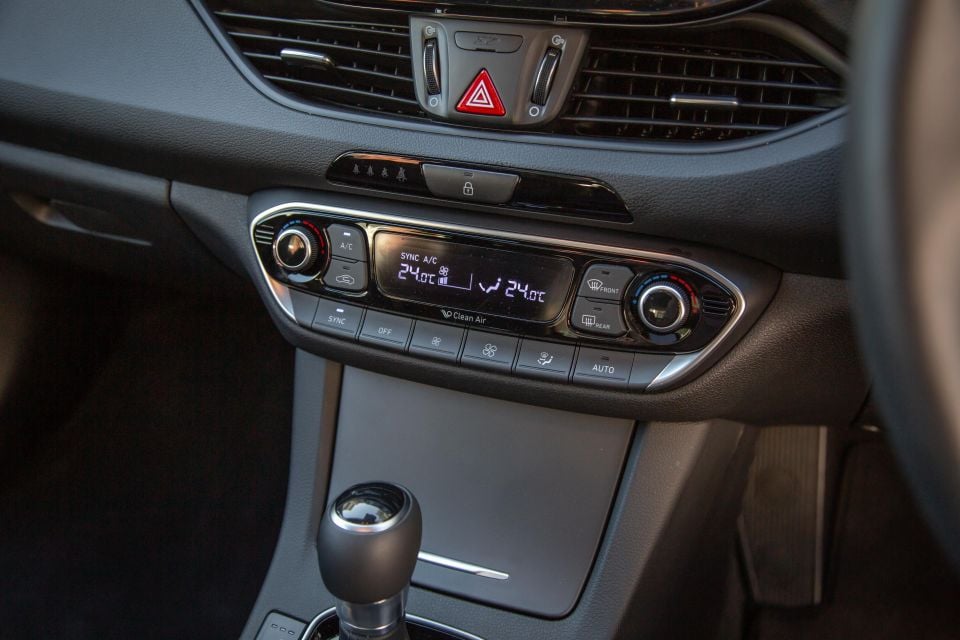
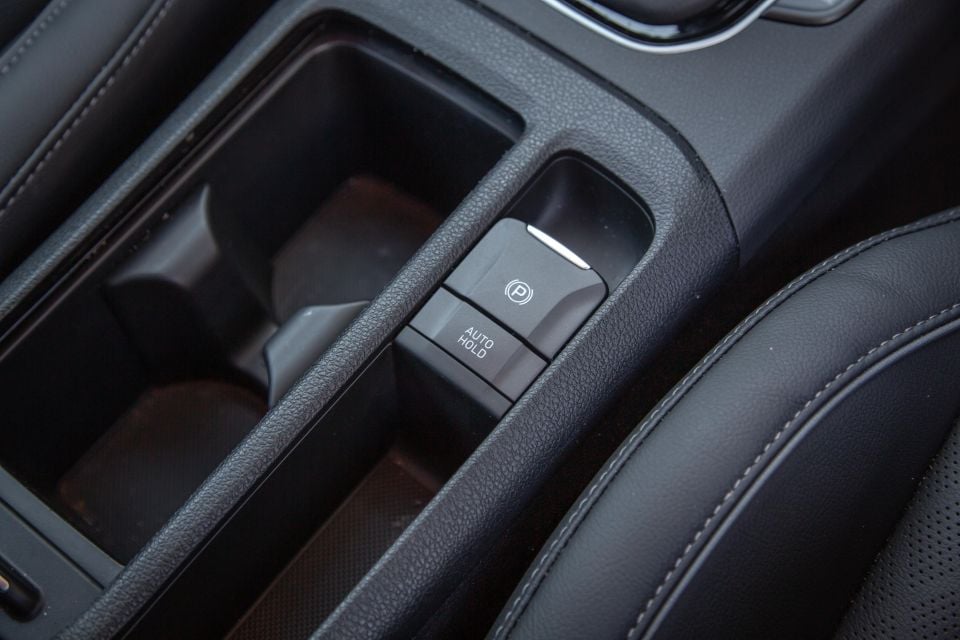
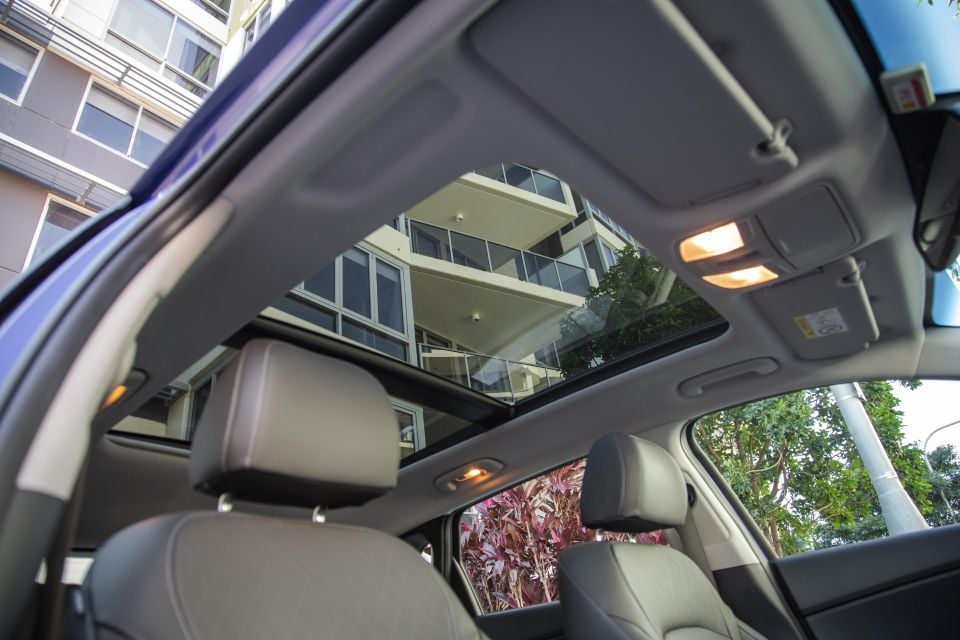
The 8.0-inch infotainment screen displays satellite navigation, DAB+ digital radio, and Apple CarPlay and Android Audio, and there’s a Qi wireless phone charger. Who doesn’t love a cordless phone charger!
Another great feature is the Auto Link Premium app (though soon to be discontinued). Setting this up can be useful, as it allows you to check your vehicle’s health, remote start your car, and access fuel discounts from your phone.
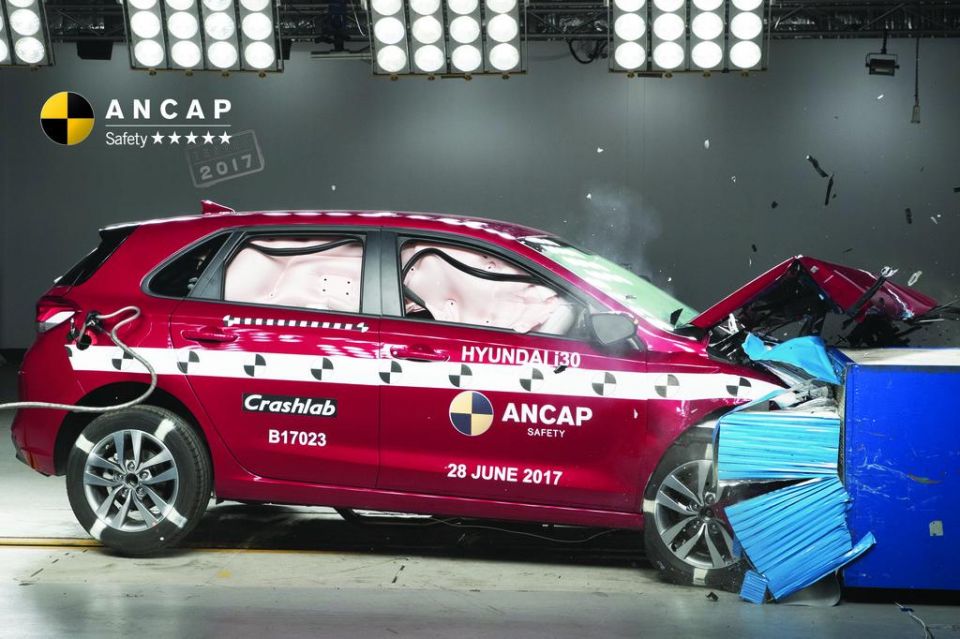
Features fitted include seven airbags, a reversing camera, and active safety features including active cruise control, blind-spot warning, driver attention warning, autonomous emergency braking, and lane-keeping assist.
We’re pleased to say that Hyundai has done a solid job in making sure these features enhance the experience, not make it boring. The lane-assist system is an example of this – it’s never too forceful in nudging you away from road lines like some rivals.
The active cruise control is also a winner. By pressing a button on the steering wheel, you can set the distance between you and the car ahead. This means you could almost cruise to your destination without intervention as it will safely adjust its speed for you.
The i30 was tested in 2017 and received a five-star rating from ANCAP, and overall score of 35.01 out of 37.
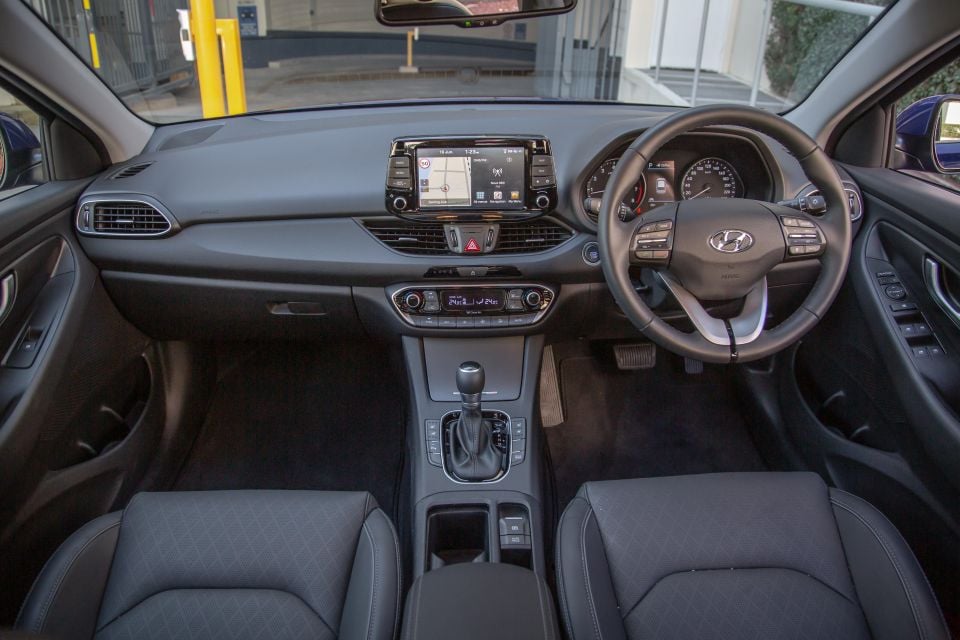
The words neat and tidy come to mind when describing the i30.
The centre console area is organised nicely, with the gearstick in front of two cup holders on the transmission tunnel. But despite being very user-friendly, its air-conditioning unit, dashboard and infotainment system lack a little creativity.
This is evident in its cheap-looking buttons and dials, flimsy plastic covers, and outdated satellite navigation. It’s disappointing considering the price tag.
On the other hand, its simplicity does mean it will take you only a few seconds to adjust the dual-zone climate control system or change the radio station.
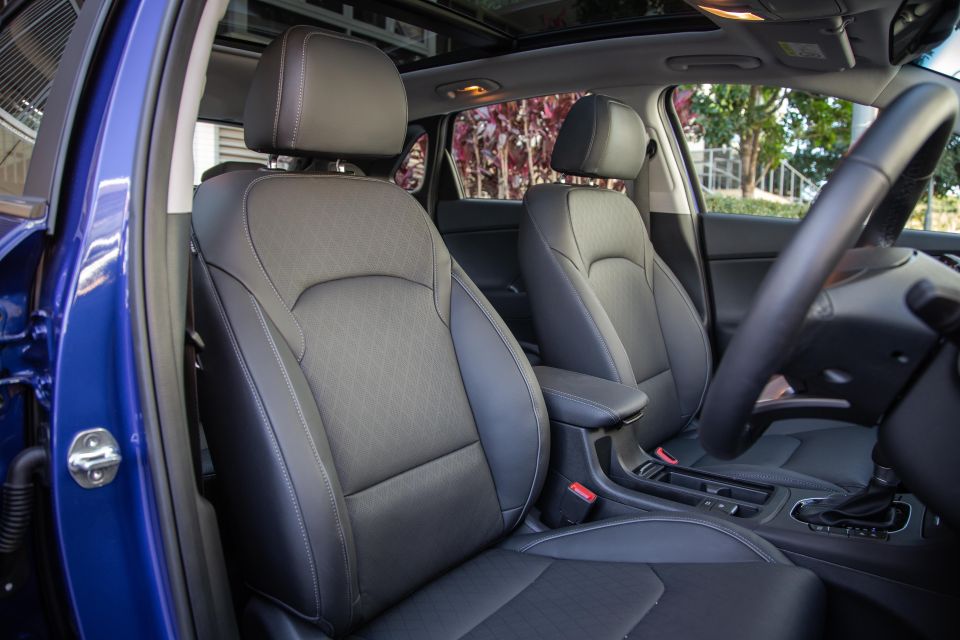
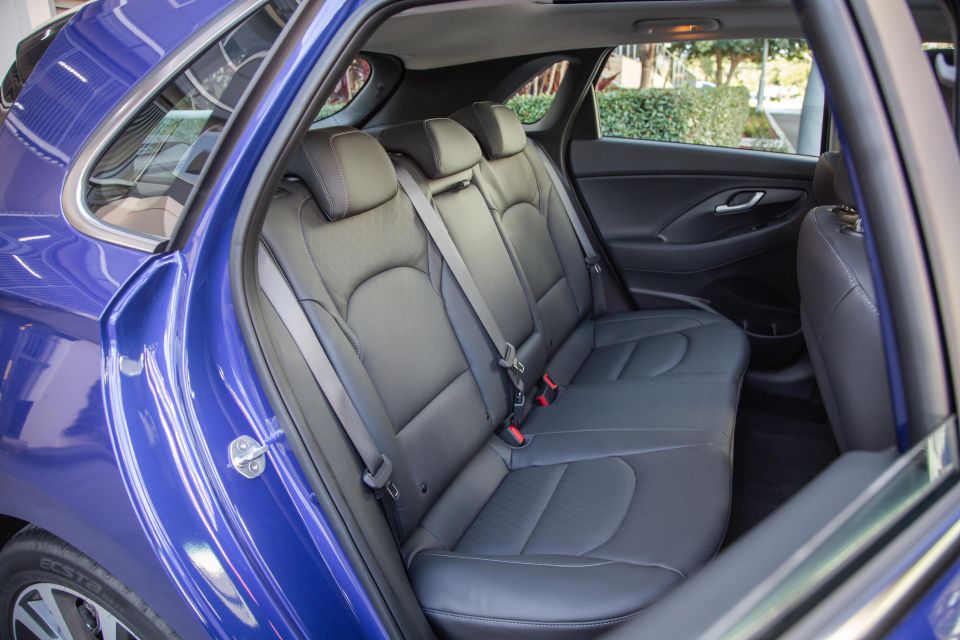
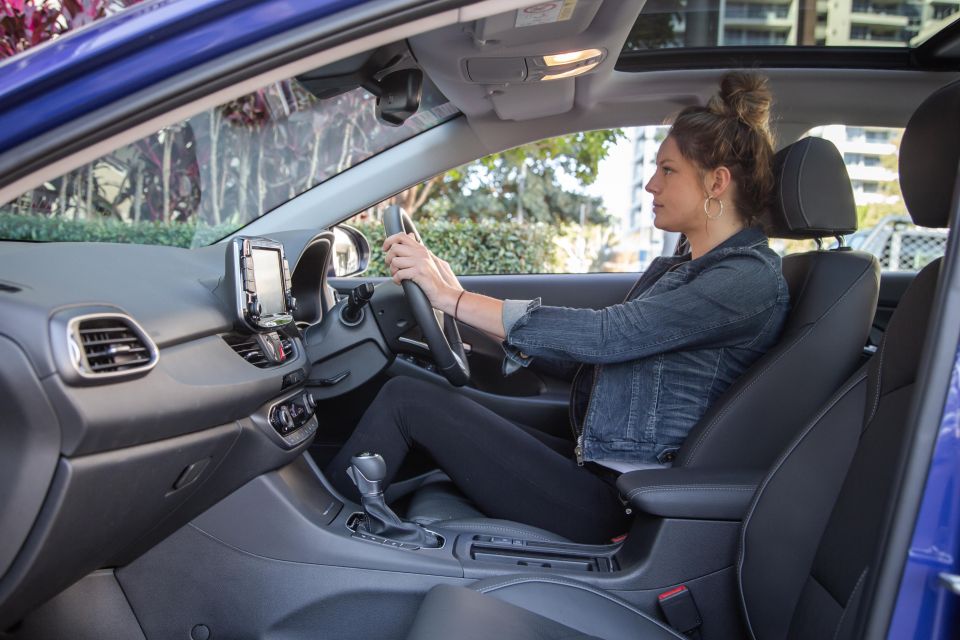
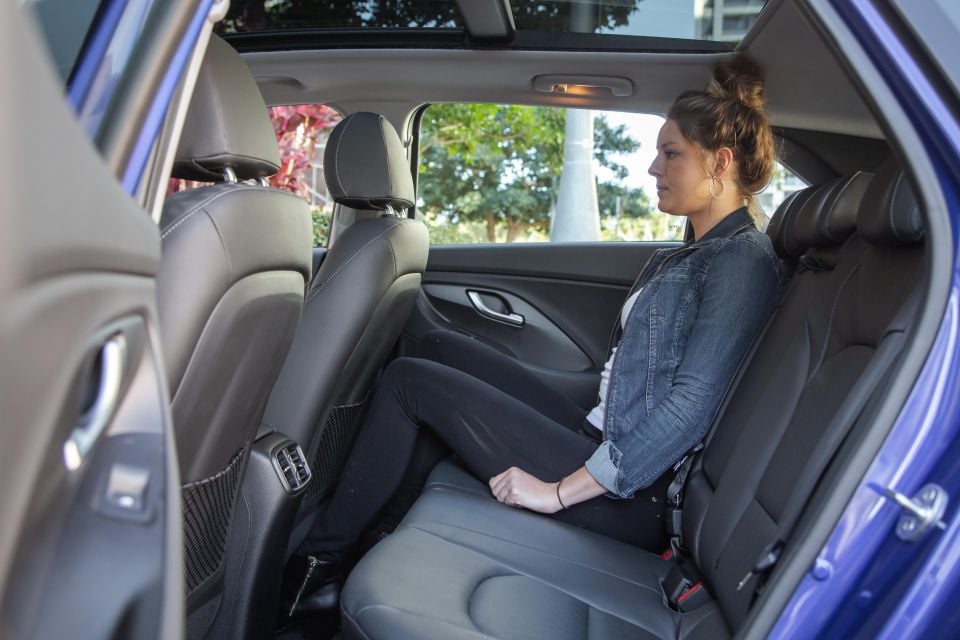
Storage space is minimal in the lower tier of the dash, especially if you are using the wireless smartphone charging pad. Here is also where you will find a USB port and a 12-volt outlet.
The Infinity-branded seven-speaker premium audio system is okay, but we’ve heard better.
All of your data settings can be viewed on the dashboard, which includes audio, tyre pressure, the trip computer, a digital speedometer, and cruise control.
What sets apart the Premium and N Line from the base models is the large panoramic sunroof spanning most of the roof. It adds a really nice sense of airiness on a sunny day.
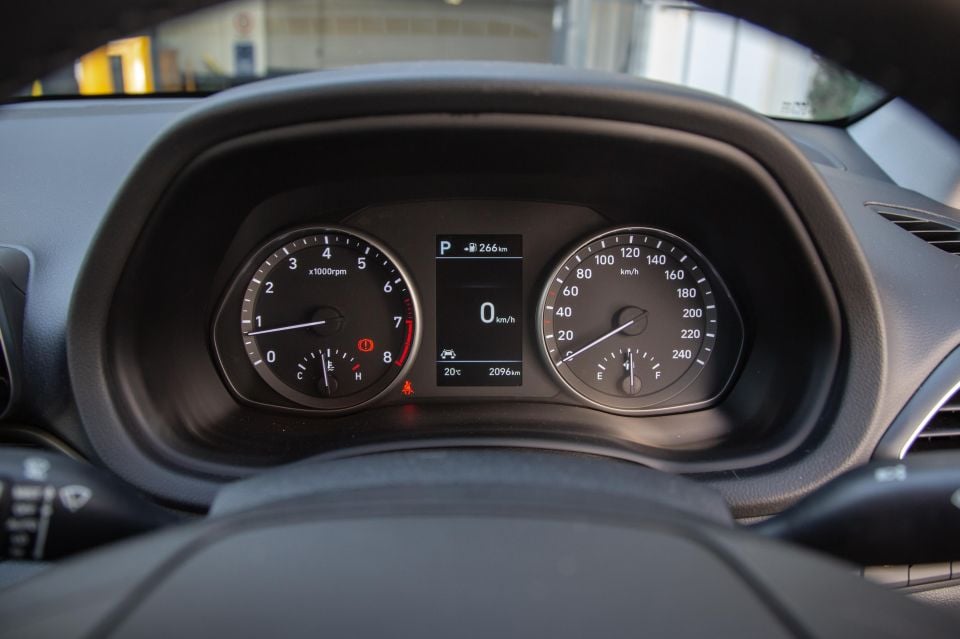
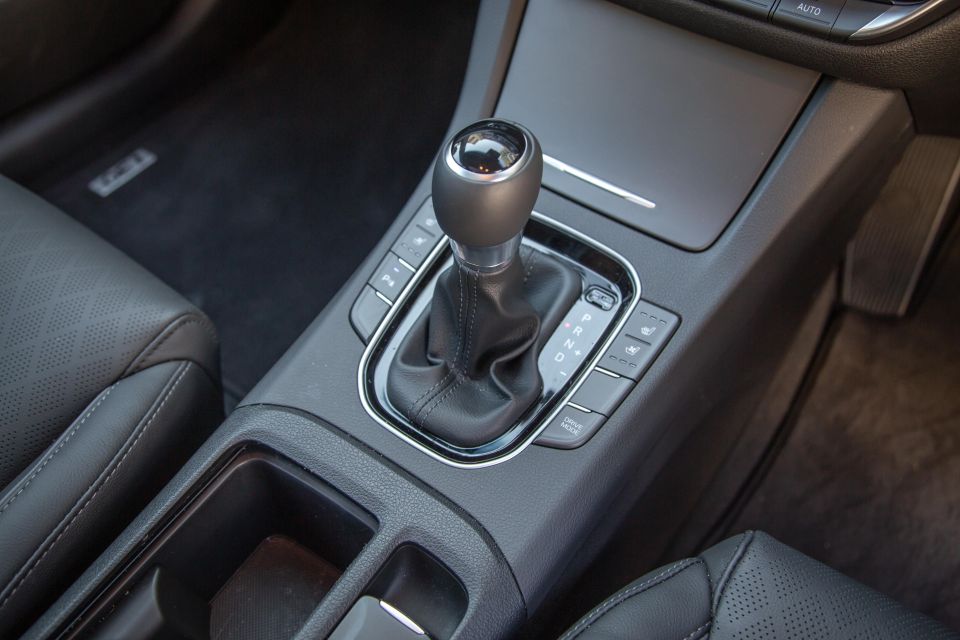
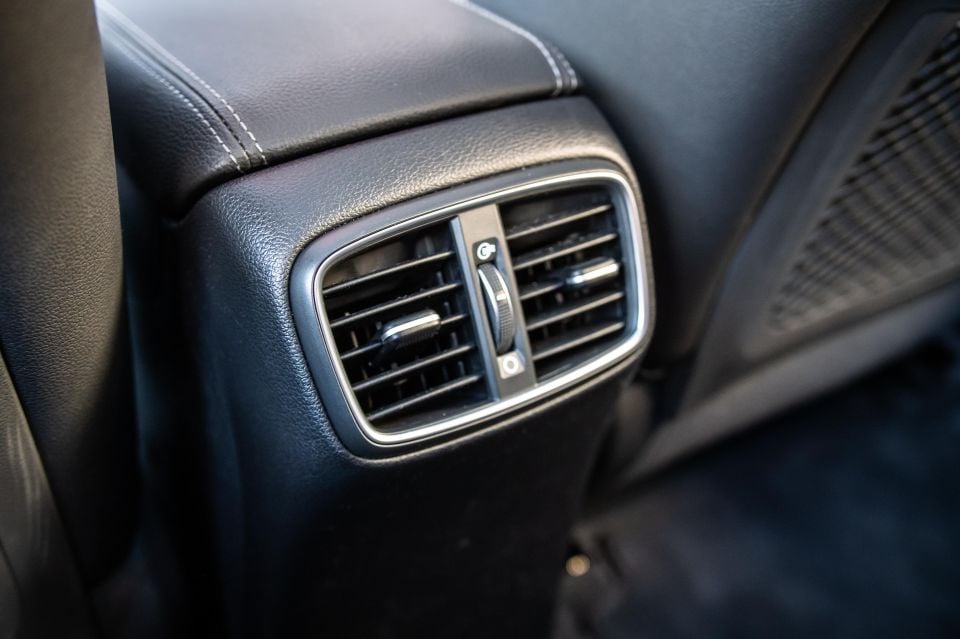
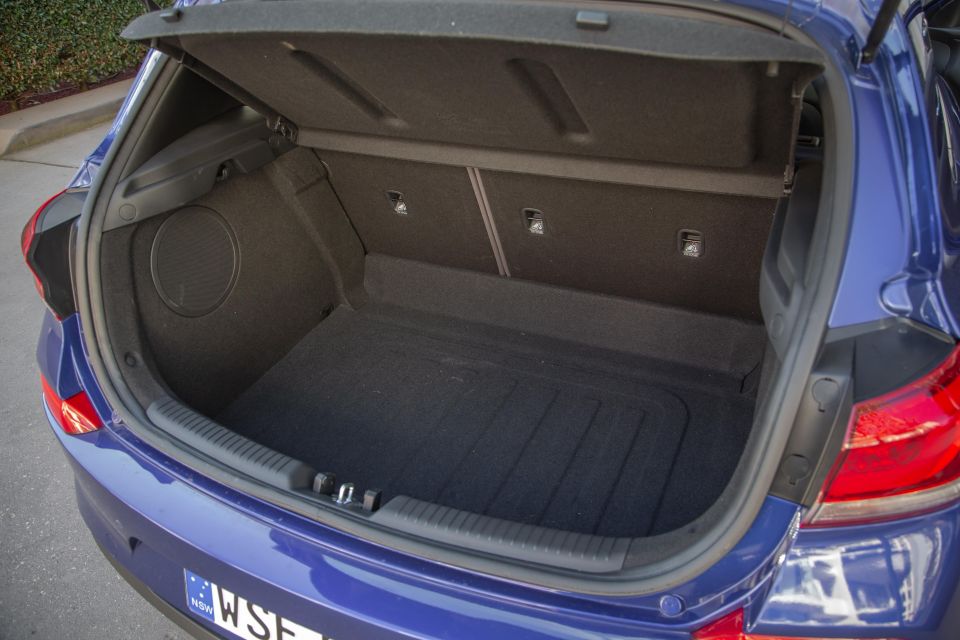
Our vehicle came with black leather seats (upgrade to the N Line for the red stitching). To match its sporty persona, Hyundai has gone with a racy-looking driver and passenger seat. They are nicely made, and comfortable for longer trips.
A highlight is the heating and ventilation system in the seats because, really, it’s the small things that matter. The temperature for this can be easily adjusted using a button next to the gear stick.
The back seats can comfortably fit two adults, and the space features a folding armrest with cup holders, along with air vents, seat pockets, and coat hooks.
The boot can hold 395L, but to maximise space the back seats can be split 60:40 and folded down to make room for a generous amount of luggage, including a road bike, surfboard, or several suitcases.
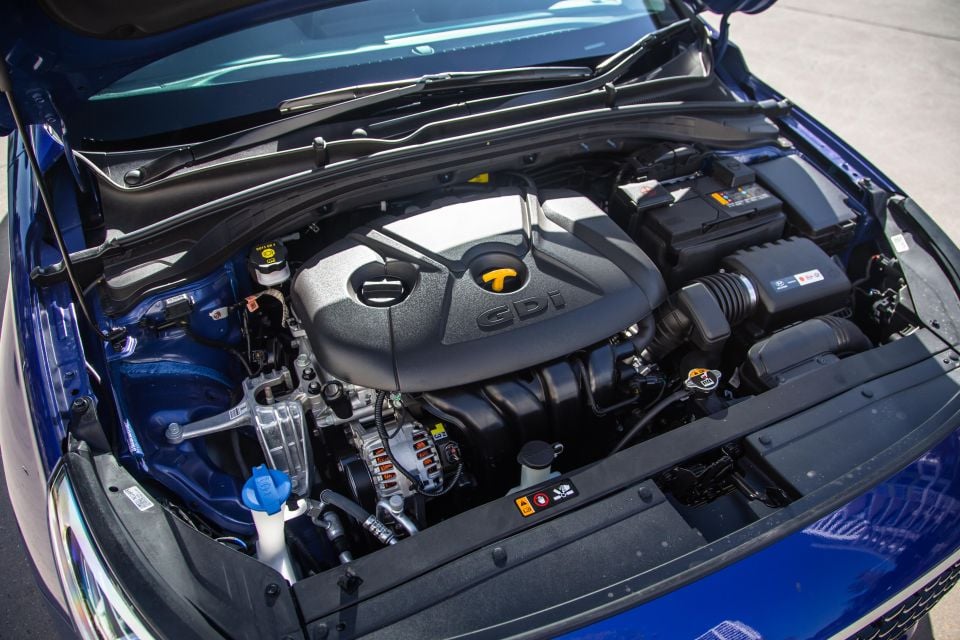
The i30 Premium has a standard six-speed automatic transmission with a sequential manual mode, and is powered by a 2.0-litre four-cylinder petrol engine. As a maximum, you can get 120kW of power at 6200rpm, and 203Nm of torque at 4700rpm.
If all that means nothing to you, then it’s your average-paced car in the speed and pick-up department. For a small car, it cruises well in town and on the freeway. Just don’t expect to win any traffic light drag races.
The i30 Premium is also available with a a torquey 1.6-litre turbo-diesel engine and dual-clutch auto (from $36,100) which offers a bit less power (100kW at 4000rpm) but 100Nm more shove from lover in the rev range (300Nm at 1750-2500rpm). It’d certainly be more effortless off the line and notably more efficient (4.7L/100km v 7.4L/100km).
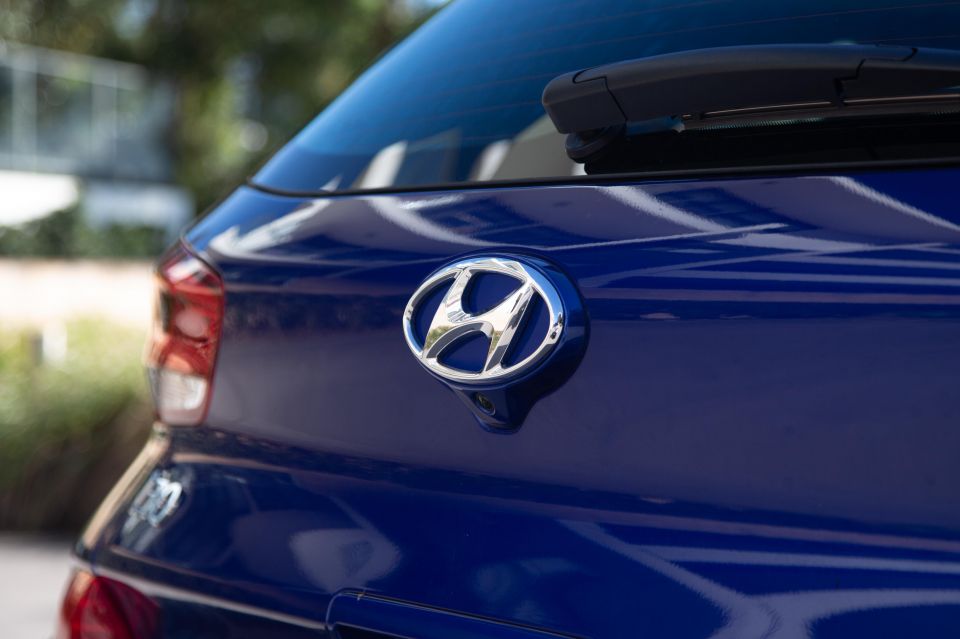
For a dash of extra pep, you have the option to upgrade to the sportier N Line Premium, equipped with a 1.6-litre turbo petrol engine with seven-speed DCT auto. This engine offers 150KW and 265Nm, adding more hustle to your daily commute.
All models have a 50L fuel tank. Efficiency is middling – for urban driving, the petrol i30 Premium uses a claimed 10.1L/100km, and on highways it uses 5.9L/100km, bringing it to a combined claim of 7.4L/100km.
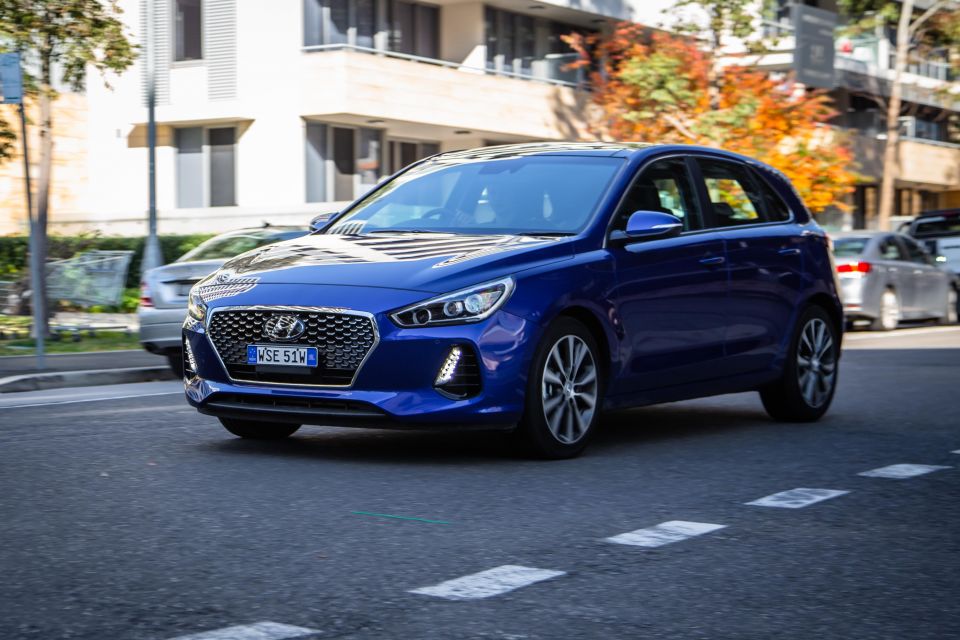
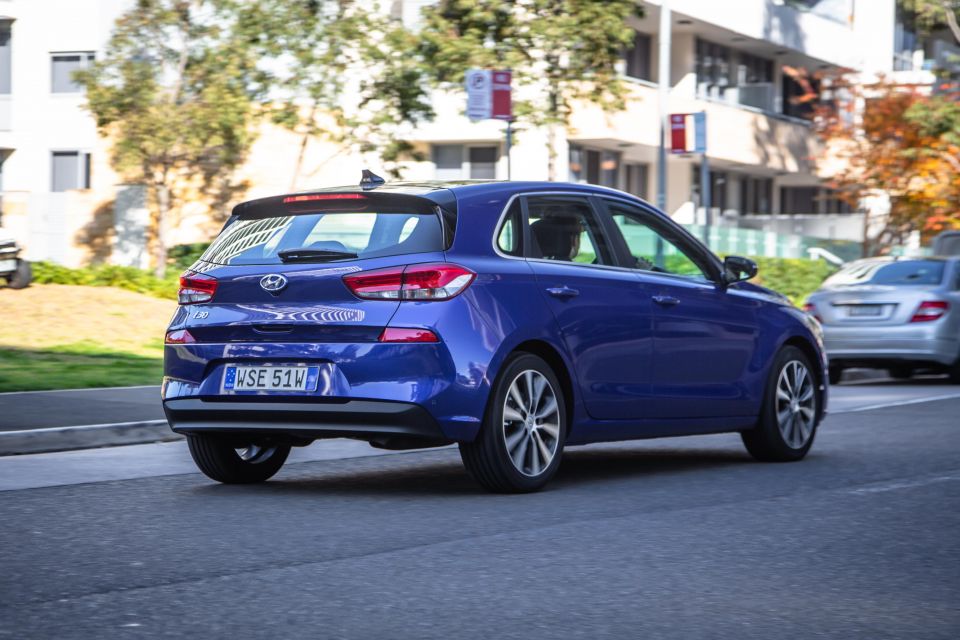
Our experience of driving the i30 Premium came with its good points and bad.
If we’re talking handling and cornering, it’s great. When taking a curve, it proved responsive and direct, especially at high speeds.
Parking the i30 is a simple exercise. It takes 2.57 steering wheel turns to get from lock to lock, and with help from the display lines on the reverse camera and good mirrors, you find yourself choosing parks that you would never have before.
The front MacPherson strut front suspension, simple yet affordable torsion beam rear axle (the N-Line gets independent rear suspension to bolster road-holding over bumpy surfaces) and Australian-specific suspension tune make speed bumps appear minimal, which is perfect for transporting a sleeping baby or a full takeaway coffee.
At higher speeds, the automatic transmission changed smoothly. However, difficulties arose when travelling anywhere between zero to 40km/h. Under acceleration, we felt the i30’s 2.0-litre petrol lacked low-down torque (all 203Nm doesn’t come in until 4700rpm) to get the 1382kg (kerb) hatchback going with notable punch.
When sitting at a set of traffic lights, it’s unlikely you’ll be the first one out of the gate.
Many cars offer a selection of driving modes, and the i30 Premium is no exception. It comes with three options – Normal, Eco, and Sport. Eco was a little dopey, and the lack of oomph mentioned above was amplified in this mode. Despite Eco being cost-effective, Sport or Normal was our preferred option.
Around town, despite the hiccups, it’s smooth and easy to manage. It’s the perfect car for someone who has a million things on their brain and just needs their car to be one less thing to worry about.
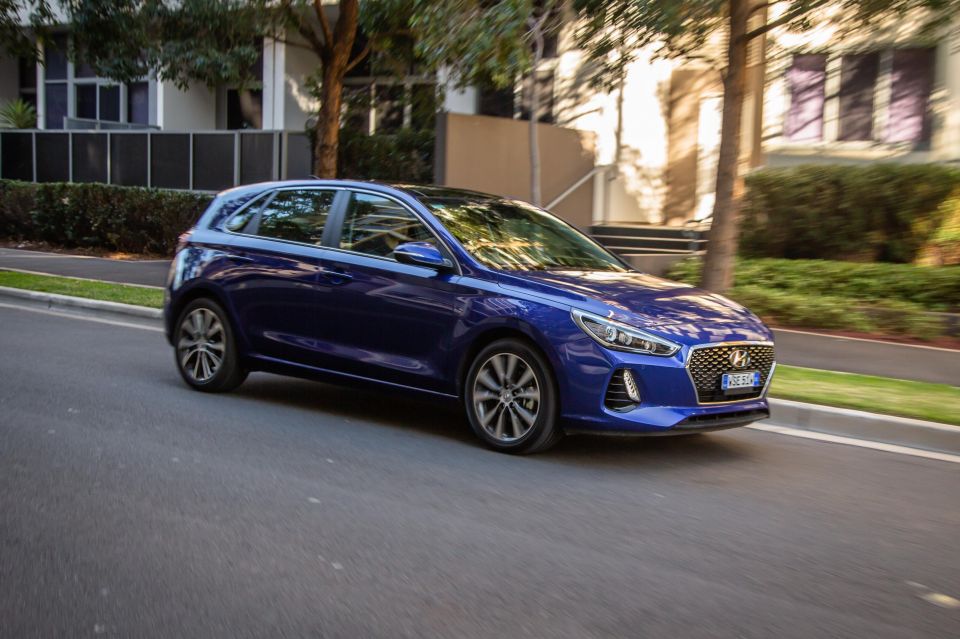
Like the wider Hyundai range, the i30 is covered by a five-year, unlimited-kilometre warranty with lifetime capped-price servicing.
Scheduled maintenance is required every 12 months or 15,000km, whichever comes first, with the first five visits quoted at $259, $259, $259, $359 and $259 totalling $1395 for the first 60 months/75,00km – making it one of the most affordable small cars to service this side of the Toyota Corolla.
It’s also worth noting 2.0-litre petrol and 1.6-litre turbo-diesel versions of the i30 have 15,000km service intervals, whereas the N Line with its 1.6-litre turbo petrol has shorter 10,000km intervals. If you do a lot of annual mileage, this is something worth considering.
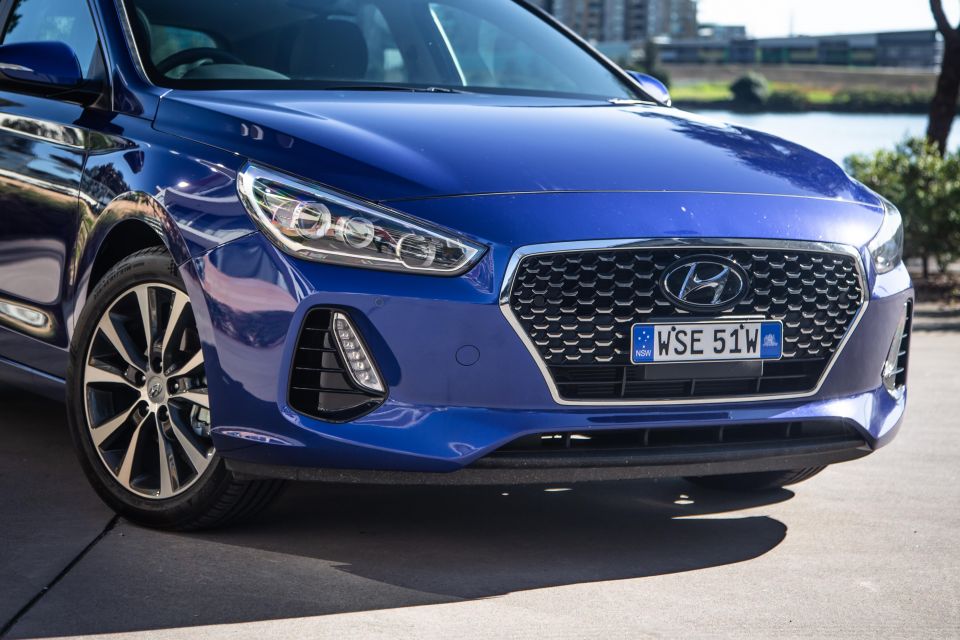
Where expert car reviews meet expert car buying – CarExpert gives you trusted advice, personalised service and real savings on your next new car.
Overall, we enjoyed the 2020 Hyundai i30 Premium.
Our standout features include the still-handsome exterior styling, as well as the handling and parking systems, and panoramic sunroof. Things that could be improved would be its interior dashboard design, infotainment system (that update comes in Q4 2020), and acceleration.
Would we buy it? As mentioned at the beginning, it ticks many boxes. However, it’s still a little too pricey at RRP, and would encourage you to shop for a deal.
Considering the N Line Premium is just over $2000 more, we would look into upgrading because the sportier features are worth it.
Where expert car reviews meet expert car buying – CarExpert gives you trusted advice, personalised service and real savings on your next new car.


Matt Robinson
15 Hours Ago


William Stopford
2 Days Ago


Matt Campbell
2 Days Ago


William Stopford
3 Days Ago


CarExpert.com.au
6 Days Ago


Max Davies
7 Days Ago